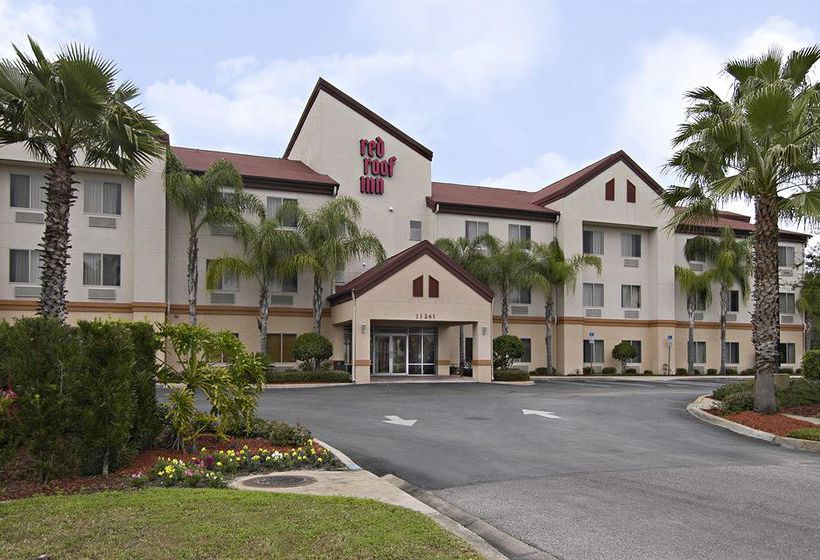Since our founding in 1976, The Douglas Company has focused on building senior living and multi-family projects for owners and developers who depend on us to control the risks and costs of the many facets of development. During that time we have developed comprehensive processes for nearly everything we do. From preconstruction, project start, through construction, project completion and warranty, we have 68 detailed and documented processes in place that are followed, tracked and reported on consistently. Additionally, we are continuously training our staff on these processes to assure consistency in the delivery of quality products. These proven processes, and The Douglas Company’s discipline in following them is a true competitive advantage and provides our clients with the added value they deserve and expect from The Douglas Company. Earlier this year, we decided it was time to “brand” our processes to help our clients better understand how The Douglas Company will fulfill...
Read More >Do you want a General Contractor? Or a partner that contributes to your success?
Developers want to bring the best product to the market that they can and do it in the most economical fashion that they can. Understandably so. That makes for a successful project, after all. Many pieces are important to the development team which can sometimes be a puzzle to put together. Especially important is the selection of a General Contractor. There are of course multiple General Contractors that can help you build buildings. The Douglas Company strives to be more than just a General Contractor because those can come and go. We strive to be your business partner, contributing to your success by helping to create beautiful communities for people to call home. We enjoy nothing more than bringing our 42 years of experience to the table early in your project. We can help work through initial budget estimates with our extensive experience in the senior living, multi-family and hospitality space. When...
Read More >Baby Boomers — The New Wave in Senior Living
The baby boomers, the massive increase in births that occurred between 1945 and 1964, started turning 65 in 2011. The population of people over 65 stood at just over 41 million people in 2011. With approximately 10,000 people turning 65 each day, the over-65 population is projected to grow to over 85 million by 2050. The baby boomers have shaped the housing market for many years, and as baby boomers approach retirement, there is no doubt, they will shape the senior housing market for years into the future. Market studies indicate that as baby boomer age, they want to maintain an active lifestyle either within their own community, or a community near their adult children. While many seniors prefer to stay in their homes as long as possible, a higher percentage of the baby boomer generation, compared to the previous generation, desire an easier “carefree” lifestyle. Senior (age restricted) apartment communities, villas,...
Read More >Construction Project Managers Versus Other Industries
The title of Project Manager gets thrown around a lot today in our industry, and many others. Since the generally-accepted definition of a project is "A temporary endeavor undertaken to create a unique product, service or result", that's understandable. This broad-reaching definition written by the Project Management Institute can define a lot of different undertakings in so many industries, and since every project must have someone in charge, the title Project Manager is easy to assign. In some cases even, it's a de-facto title that someone assumes by accident or default in an organization, perhaps even on top of a functional role they already play within a company. In the construction industry, however, this is not a title that is taken lightly - nor should it be. A construction Project Manager is a specialized individual that takes the title through purposeful education and training, deliberate and hard work, and only after...
Read More >Better, Not Bigger
There is a large need in the senior housing market to develop and build affordable communities. The current economy mandates, due to higher interest rates and high construction costs, the need to design and develop senior facilities that produce better, not bigger, designs. The best senior community operators are looking at downsizing all of their new senior properties to respond to the current market conditions and to increase competition in most markets. As many young Americans are attracted to micro-units, so too will seniors. The key to having an affordable design that will compete in the market is controlling the square footage of the living units, and the common space, while still providing top tier amenities. The Douglas Company is working on developing a prototype design for an assisted living and memory care communities that controls the square footage of the entire building footprint, but still provides a design that feels like...
Read More >Cost Increases Continue
In late June, Turner Construction Company released its updated cost index for the second quarter of 2018. Turner has studied this data for decades, taking into account labor rates and productivity, material prices, and the competitive condition of the marketplace. This makes it unique to the many other indices available to our industry. The data from this month continued the quarterly trend of rising costs since 2014. In fact, costs were measured at 5.63% higher than where they were for the second quarter of last year. The quarterly increase from just three months ago is 1.68%. While these numbers don't show a change in trend, they remind us of an important reality: It is very difficult for contractors to hold pricing in these market conditions. That's also not to mention the volatility the recent tariffs have introduced to our marketplace, of which the impact is yet to be fully understood. Our only...
Read More >Senior Living for the Middle Market
Lately, as I talk with our senior living clients, many of them seem to be thinking about the same challenge. Similarly, that same challenge seems to be the topic of seminars at recent industry conferences, as well as the subject of several articles published in many of the trade magazines. How do we provide senior living solutions to the middle market?
For much of the past thirty-five-plus years, development and growth of the senior living industry have been off the charts. Everyone understands that as the baby boomers age, we will be hard-pressed to meet the demand, however currently there continues to be concern and discussion that the market is becoming overbuilt. But upon further study, one will quickly discover that most of the growth and development has been either on the high-end or on the affordable/subsidized end of the market. Very little new development has been targeted at the middle...
Read More >Prompt Payment and Risk Management
An interesting study was published recently on the impact of slow payments in the construction industry. It estimated that the average payment cycle for subcontractors is 54 days, and that is costing the industry over $40 billion dollars each year. That's a staggering figure, but one that makes sense when you consider the cost of construction rising and the amount of financing it takes for subcontractors to stay in business. This added cost comes from a number of sources:
- Finance charges from lines of credit subcontractors must take out to afford materials.
- Late fees assessed by suppliers when subcontractors can't pay bills due to non-payment.
- Lost revenue from liquid assets being stuck in accounts receivable versus short-term investments.
- The inability for subcontractors to obtain discounts from their vendors for prompt payment.
Project Performance
In my travels in Florida meeting with prospective clients, I hear continued complaints about the performance of their contractors. I get that, it is difficult, particularly in Florida. So what is the solution? We have found five primary factors:
- Over supervise on projects. This adds to general conditions, which nobody likes, but with high risk, highly leveraged, significant capital investments, such as these, it’s cheap insurance.
- Keep ironclad control over details—every day. The smallest detail can derail a project.
- Ensure every activity that needs to occur on each job’s schedule occurs each day.
- Hire quality subcontractors and suppliers who commit the resources to do the job well. They don’t need to be gold plated, but they may not be the cheapest.
- Have a cooperative, team and problem-solving orientation. Every project will have its challenges. The key is how teams work together to solve them.
The Hidden Costs of Cost-Plus/GMP Work
There are cost inefficiencies intrinsic to the cost-plus/GMP delivery of construction (often referred to simply as GMP delivery). The cost-plus/GMP method may have merit when delivering projects with significant unknown risks such as first-of-a-kind projects, or projects with limited historical data, or when a project must start construction without completion of the design. However, when cost-plus/GMP delivery is used to deliver projects with well-established cost histories or projects with reasonably complete construction documents, then the cost-plus/GMP delivery method is likely to produce a cost premium when compared to a stipulated sum contract delivery (Lump Sum delivery). Let’s explore why. In a lump sum contract, the contractor is incentivized to deliver the project quickly and cost efficiently. The incentive is simple. When the contractor effectively drives the project with the optimal staff, he finishes on time or early and he enjoys the savings which result. Lump sum contractors track their costs accurately and...
Read More >Construction Schedules
It is getting increasingly difficult to keep almost all senior projects on schedule during the construction phase of the projects. Some of the hurdles that impede schedule achievement are as follows:
- Limited manpower available from most subcontractors
- Quality of the manpower due to lack of proper training
- Poor or no supervision being provided by subcontractors
- Material delivery timelines
- Poor design documents
- The number of government inspections and the timing of the inspections due to reductions in the number of inspectors by a lot of government agencies
- The quality level of most senior projects the last five years has increased to almost a resort level of finish
- There are ways to help control or help minimize these schedule impacts that The Douglas Company employs on every project:
- Design check to help prevent drawing coordination issues
- Put material purchasing based lead times including shop drawing review for all material on each construction... Read More >
To Bid or Not to Bid Your Senior Living Project
During the height of the recession, I wrote a blog on the same topic. Times have changed since then, so circumstances have changed, and it’s worth revisiting. Prices keep increasing, making projects more challenging. As construction activity has increased, the number of trade subcontractors and skilled workers has increased only nominally, and supply and demand are pushing up prices, including for materials. With all the challenges of price increases, owners are asking themselves if they should competitively bid their project to get the best prices. To best understand this, it is important to look at the underlying processes. Development is a complex endeavor, and risky. Though it is tempting to think that the best price comes from competitively bidding, what is on the drawings is 85%-90% of the cost of a project, so critically important. The key is to understand and control what is on the drawings to reduce and control...
Read More >First Steps In Controlling Risks in Senior Living Development
Development is risky. There is market risk, pricing risk, weather risk, governmental risk factors and perhaps most importantly, development partner risks from team members. Probably the first two decisions to be made by a developer are a selection of site and selecting who your service partners will be-architect with engineers and general contractor. The starting point of reducing risks in selecting sites is, of course, understanding if there is a market. But there are other factors in site selection that impact marketability, including site configuration, visibility from the street, and type of street the site is on. Another factor in site selection has to do with the physical attributes. Is it zoned correctly and if so what is the approval process, what are the soils like, are utilities available and affordable, are there wetlands, what is the topography and other factors that will determine how risky and expensive it will be...
Read More >Fall in the Midwest
Fall in the Midwest is a wonderful time of year. However, in the construction industry fall is a time to start planning for the arrival of winter. The great thing is, for the most part, construction projects can continue to be built throughout the winter months. There are unfortunately schedule impacts and winter charges that come with the ability to work year round. The added costs start in early November every year when the concrete plants start charging for hot water for each yard of concrete due to freezing temperatures and the masons need to start adding an accelerator to the mortar. The asphalt plants normally shut down just after Thanksgiving. Therefore it is extremely important to plan around this event if the project schedule requires a parking lot to be installed before tax day the following year when the asphalt plants will normally reopen. The further into the winter that concrete and...
Read More >Contributing to the success of our Clients and Associates
Core Purpose and Values concept was coined by Jim Collins in his book “Built to Last.” In his research, he found that all of the great companies that had lasted a long time successfully had a Core Purpose and Core Values. Since we aspire to last a long time, successfully, we developed our own. Core Purpose is your purpose for being. But more practically, it’s what one gets excited to get up in the morning to do. Our Core Purpose is “Contribute to the success of our Clients and Associates.” There are two parts to this - Clients and Associates. Our clients put their trust in us when they hire us, and they hire us to contribute to their success. We must honor their trust by doing this, and we do, through building quickly & reliably, with quality, adding value, and controlling risk. From a selfish standpoint, it’s intrinsically rewarding to be...
Read More >Red Roof Inn
[gallery columns="3" link="none" size="large" ctmgs_gallery_layout="slider" ctmgs_items="1" ids="488,486,487"]...
Read More >














